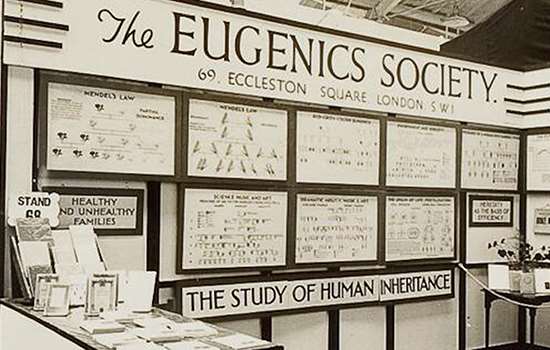WOOLF, Virginia, née Stephen (1882-1941)
Plaque erected in 1974 by Greater London Council at 29 Fitzroy Square, Fitzrovia, London, W1T 5LP, London Borough of Camden
All images © English Heritage
Profession
Novelist, Critic
Category
Journalism and Publishing, Literature
Inscription
Virginia Stephen (VIRGINIA WOOLF) 1882-1941 Novelist and Critic lived here 1907-1911
Material
Ceramic
Notes
Plaque to George Bernard Shaw also at this address.
The novelist and critic Virginia Woolf was one of the most influential writers of the 20th century. In addition to writing ground-breaking novels such as Mrs Dalloway (1925), To the Lighthouse (1927) and Orlando (1928), she was a prolific essayist and diarist, and a prominent figure in London’s literary society.
EARLY BLOOMSBURY
Virginia moved from Kensington to 46 Gordon Square in Bloomsbury with her siblings Vanessa, Thoby and Adrian after the death of their father, Leslie Stephen, in 1904. There, the Stephen children started hosting informal gatherings on Thursday evenings with Thoby’s friends from Cambridge – among them Lytton Strachey, Roger Fry, EM Forster and John Maynard Keynes. The friends would later become collectively known as the Bloomsbury Group. Recalling the liberal atmosphere of those early ‘Old Bloomsbury’ days, Woolf wrote ‘there was now nothing that one could not say, nothing that one could not do’.
Following Thoby’s death, and Vanessa’s marriage to Clive Bell, the meetings moved to 29 Fitzroy Square, which Virginia took on a five-year lease with Adrian in August 1907. The area – which had not yet been given the name Fitzrovia – had been the haunt of writers and artists since the 19th century. A previous tenant at number 29 had been George Bernard Shaw – whose plaque sits above that to Woolf – and Fry would later set up the Omega workshop and studio at number 33.
‘PYRAMIDS OF BOOKS’
Number 29 was the siblings’ first independent residence together. ‘We are having bright green carpets and I want to buy old furniture’, Virginia told a friend excitedly. They ate bohemian suppers of herrings and tripe and kept an un-housetrained dog called Hans.
Virginia and Adrian did not always get on, however. Virginia wrote how the evenings would often end with them both stalking off to their rooms ‘in complete silence’, and the family joked about how the siblings threw butter-pats at each other at breakfast.
Virginia, who occupied the whole of the second floor, spent her time here writing articles for newspapers and began her first novel, The Voyage Out, published in 1915. In her sitting room were ‘great pyramids of books, with trailing mists between them; partly dust, and partly cigarette smoke’. This period of Virginia’s life was also marked by an emotional entanglement with her brother-in-law, Clive Bell, and by the trauma of her first stay in a sanatorium in the summer of 1910.
Located close to Euston Road, Fitzroy Square was noisier than Virginia was used to. She complained of the vans ‘which grind rough music beneath my window’ and, after visiting St Ives in Cornwall, she wished that ‘Bloomsbury was on the seashore’. Virginia was pleased, therefore, to move to the quieter Brunswick Square in November 1911. In 1915 she moved with her husband, Leonard Woolf, to Hogarth House in Richmond – another of her London addresses to be commemorated with an official blue plaque.
Nearby Blue Plaques
More about blue plaques
-

Eugenics in Britain
Find out more about the controversial and changing ideas about eugenics, and some of the figures with blue plaques who supported or opposed it.
-

Support the blue plaques scheme
Every blue plaque, from its research to unveiling, is funded by donations. Find out how you can help support the scheme.
-

Search for a Plaque
Use our search function to look for someone from history, or browse by category or location.